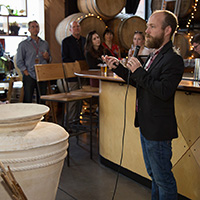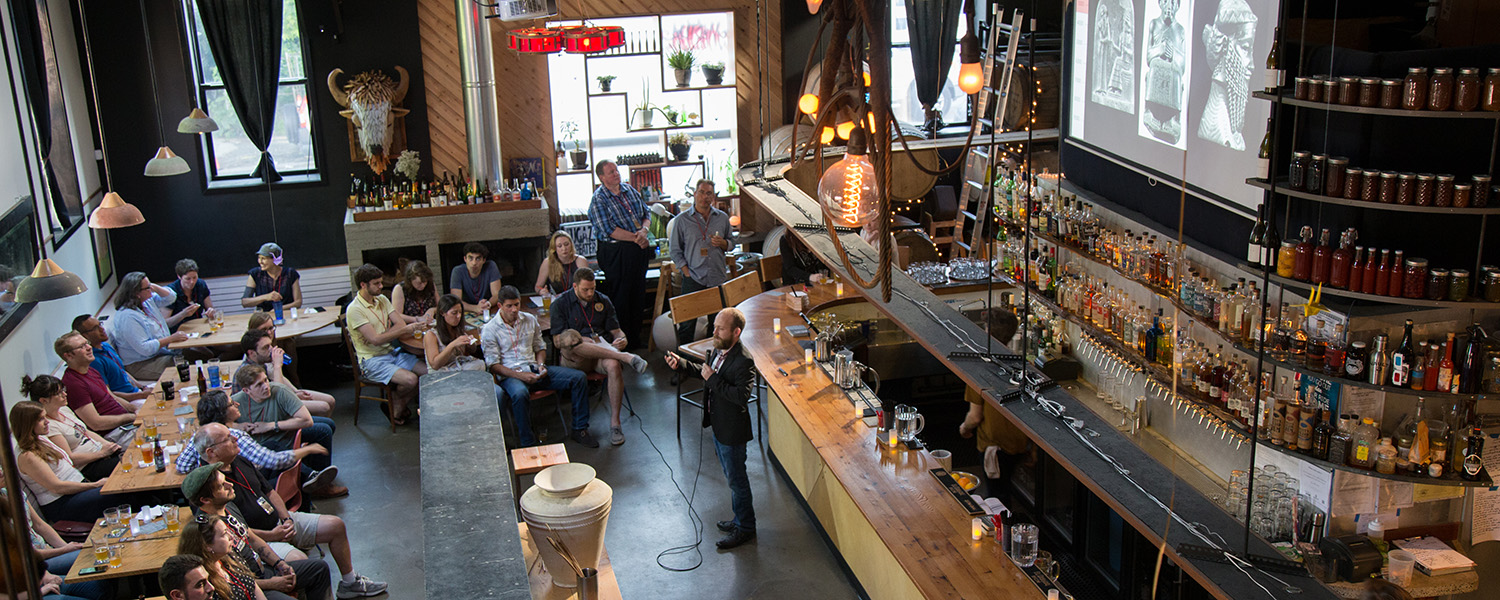
Brewing UpAncient Beer
Lager, IPA, stout — these days beer options seem endless. But no matter your preference, there’s one you likely haven’t tried: ancient beer. That’s right. Historians say it was the beverage of choice in Mesopotamia.
Tate Paulette, an assistant professor in NC State’s Department of History, studies urban food systems in the ancient world. He also helped lead a collaborative effort to recreate Sumerian beer using authentic ingredients, equipment and brewing techniques.
We caught up with Paulette to learn why — in a world full of thousands of brewpubs, microbreweries and craft breweries — it’s important to embrace beer’s past.
Why was beer the beverage of choice in Mesopotamia?
If we could travel back in time and ask the people themselves, I think the response might go something like this: “Why do we like beer? What a strange question. Beer is what we drink. It’s who we are.” To be a Mesopotamian was to drink beer. Bread was the quintessential food, and beer, the quintessential drink. In contemporary American society, we’re not used to thinking of beer as a healthy part of a balanced diet, but many people have relied on beer as a source of daily nutrition.
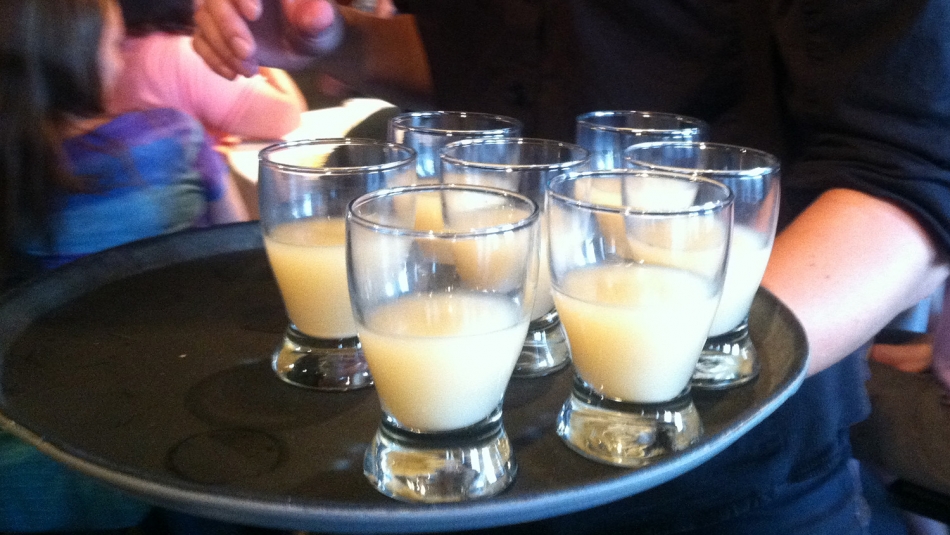
At the same time, the people of ancient Mesopotamia clearly appreciated the taste of beer, and they liked how it made them feel. Some specialists argue that Mesopotamian beer was low in alcohol content, but it’s difficult to ignore the fact that people also appreciated the inebriating effects of beer. Wine was also available, usually as an expensive import from surrounding regions more suited to grape cultivation. But Mesopotamia was above all a barley-growing region, and barley is particularly well suited to beer production. So it makes perfect sense that beer emerged early on as the beverage of choice and maintained that status across several thousand years of Mesopotamian history.
How did Sumerians, Akkadians and Babylonians enjoy their beer (at a bar, with friends, etc.)?
They enjoyed their beer in a wide variety of contexts: at home, on the job, at feasts and festivals, at the neighborhood tavern. The most vivid evidence comes from a series of banquet scenes that give us a glimpse into the lives of the upper crust. These intricate scenes, preserved at museums around the world, were often carved into cylinder seals. When rolled in wet clay, the stone cylinder would leave behind an image of the scene and function as a signature for the bearer. Banquet scenes often show one or more individuals, seated on stools or chairs, attended by servants and/or entertainers, and drinking from cups or goblets in a rather dignified manner.
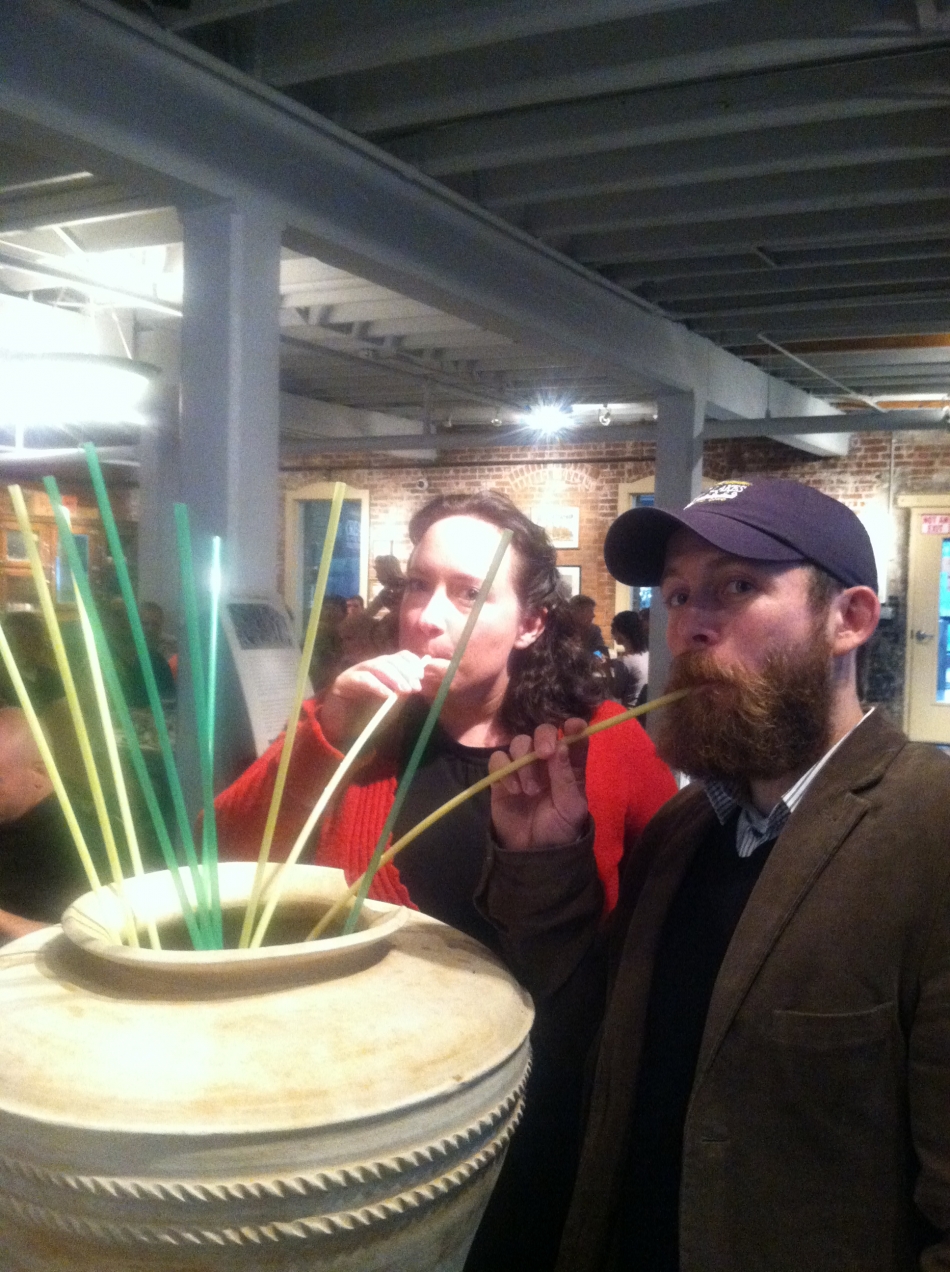
Another common scene shows one or more figures drinking from a large vessel through long straws. The straws would have been made primarily from reeds, but fancy versions in bronze and gold have been recovered by archaeologists.
I should also mention one more, let’s say risqué, beer-drinking scene. A series of molded clay plaques depict a woman drinking beer through a long straw while having sex with a man. Indeed, beer and sex were often connected in ancient Mesopotamia, whether in the context of romantic love poems or amorous encounters with prostitutes in the tavern.
What did the beers of ancient Mesopotamia taste like?
The honest answer is, we don’t really know. No one from the Mesopotamian past had the foresight to jot down tasting notes for the benefit of future historians and archaeologists like me. Or perhaps they did, and we just haven’t yet uncovered those particular cuneiform tablets. Archaeological excavations are ongoing in Iraq (though, unfortunately, not in war-torn Syria), and new discoveries of cuneiform tablets can be expected. There’s always a chance that these will add some new dimension to our understanding of Mesopotamian beer.
For now, the most that we can say with certainty is that beer was sometimes described as sweet. Of course, we can also turn to the (admittedly imperfect and speculative) results of “experimental” archaeology. The beers that my collaborative project [more on this below] produced varied, but most were on the murky side in appearance and on the tart or sour side in taste.
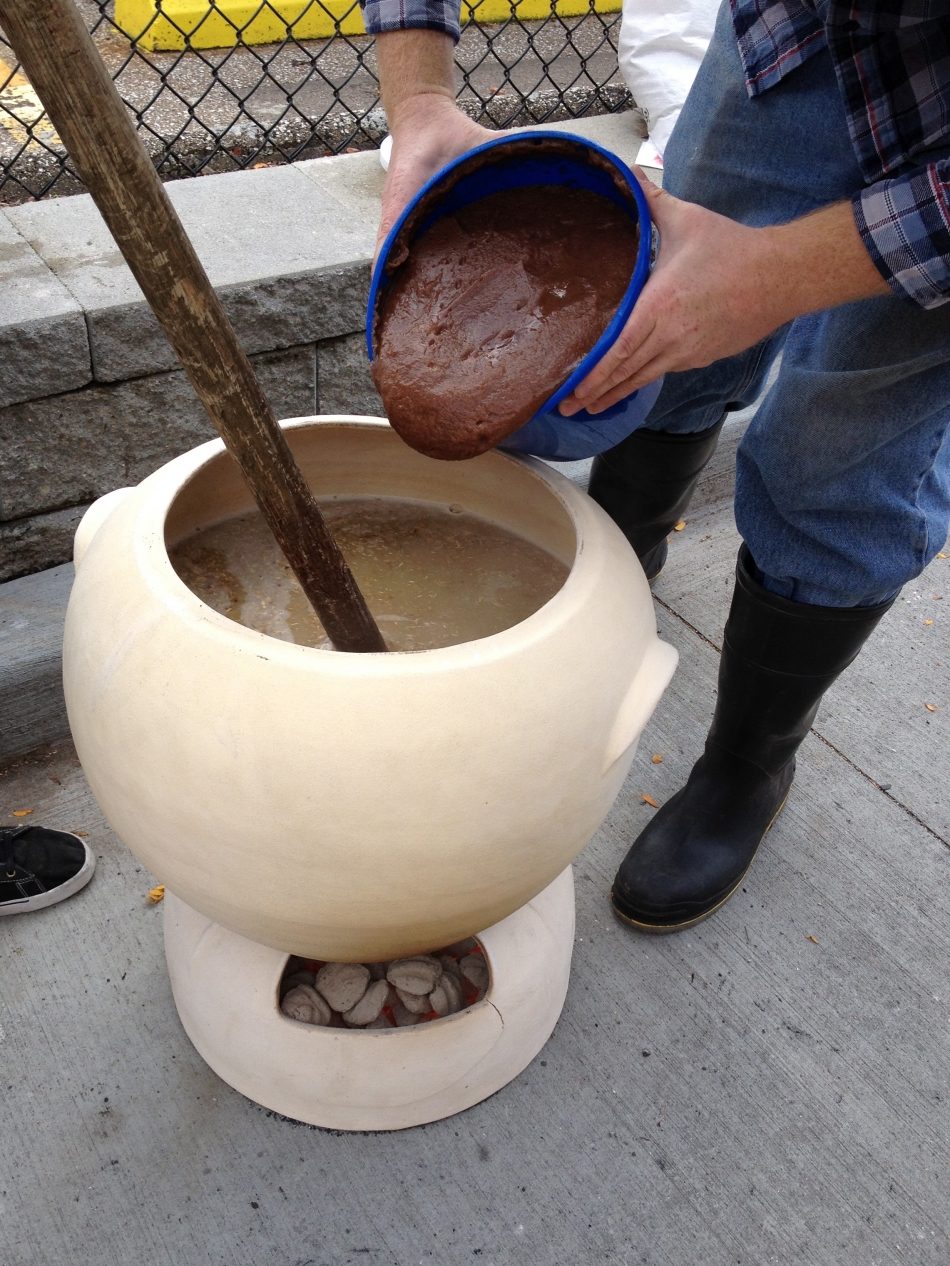
We experimented with different flavoring ingredients, for example, coriander, cardamom, fennel, juniper berries, dates and date syrup. All of these (and more) were available in Mesopotamia, but, unfortunately, no scribe felt it necessary to put down in writing which were actually used in the brewing of beer.
What got you interested in studying ancient beer?
If I’m honest, probably what got me interested in studying ancient beer was drinking not-so-ancient beer. Right now is a great time to be a beer drinker. I can walk around the corner to my neighborhood bottle shop and choose from an amazing variety of beers. As an archaeologist, how could I not be tempted to dig down into the history of these beverages?
Beer also lies at the intersection of a number of my academic interests. My specialty is the archaeology of ancient Mesopotamia, and I’m particularly interested in the politics of food, or gastro-politics. This has led me to a focus on agriculture, urban food systems and early states. My doctoral dissertation was a study of grain storage in early Mesopotamia. Political power in Mesopotamia was built on the ability to produce, stockpile and distribute grain. And the same goes for that most beloved of grain products: beer. Hence my interest.
My journey into the world of Mesopotamian beer, though, really got started at a bar in Chicago. A fellow graduate student had heard about a potential collaboration between the University of Chicago’s Oriental Institute (our institutional home) and Great Lakes Brewing Co. in Cleveland. After some enthusiastic plotting over a pint or two, we decided to volunteer our services, and the rest is history.
You’ve spearheaded a collaborative effort to recreate Sumerian beer. What does that entail?
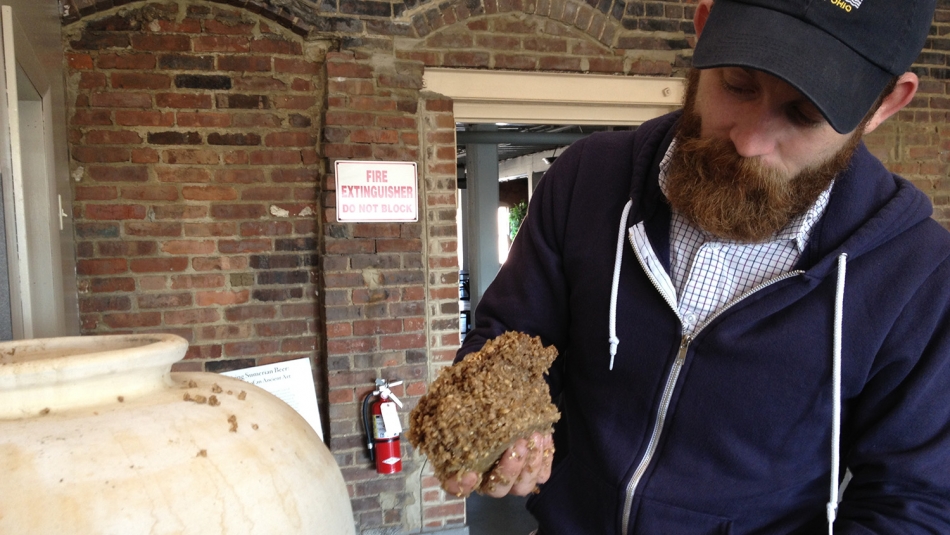
I should emphasize that this was a team effort. In fact, that was the whole point: put a bunch of archaeologists, Assyriologists (specialists in the languages of Mesopotamia), and brewers together in a room and see what happens. What happened was some animated brainstorming sessions in Chicago and Cleveland, followed by an extended, multi-year collaboration. Our goal was to recreate the beers of ancient Mesopotamia using authentic ingredients, equipment, and brewing techniques. For example, a Chicago-based potter made us replica brewing vessels, and a local baker in Cleveland helped us bake bappir, an enigmatic, bread-like ingredient used in Mesopotamian beer.
But there are some big gaps in our knowledge about the beers of ancient Mesopotamia. Often the only option was educated guesswork. So our resurrected beverages almost certainly missed the mark in some respects. But that’s okay in the realm of experimental archaeology, where the goal is not absolute fidelity to past reality but, instead, the generation of questions, testing of hypotheses, and opening up of new perspectives. It’s less about the destination and more about the journey. In this case, though, the destination was beer, and it would have been a crime not to let anyone try that beer. We’ve held a series of public tasting events in different cities, offering hundreds of people a chance to taste our results.
Why do you think beer is still popular today?
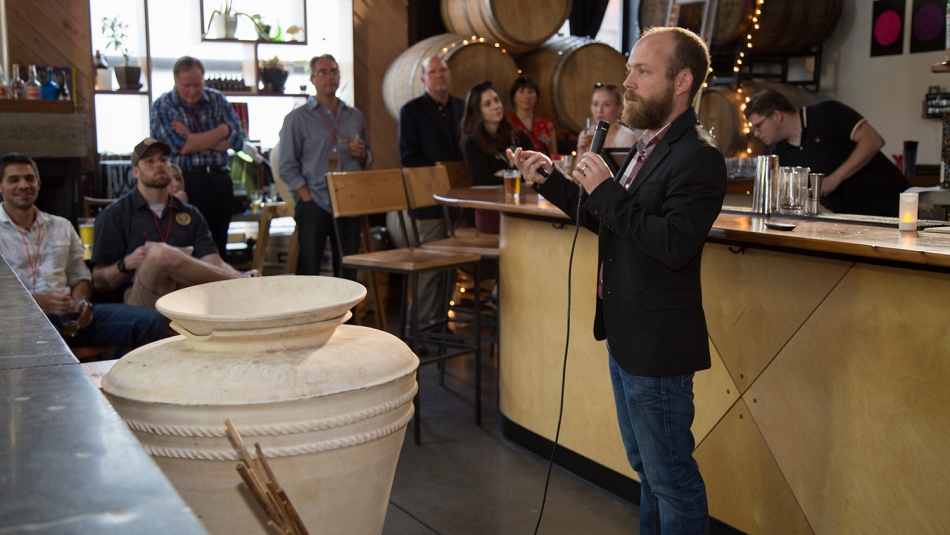
The history of beer is a long and complicated one. I always like to draw particular attention to the global diversity of brewing traditions. Although barley beers in the European tradition have today come to dominate the global beer market, many other brewing traditions continue to thrive: rice beers in East Asia, millet and sorghum beers in Africa, maize beers in the Americas, etc. And this diversity stretches back deep into the past. Beer was invented many different times in different places using different grains as a substrate. It’s tempting to think of our own beers as the direct descendants of beverages originally invented in Mesopotamia or Egypt, but the more we learn about the early history of beer, the more complex (and more interesting) the story becomes. To hazard a guess, though, about the widespread and enduring popularity of beer, I’d point to two features. First, beer has often been perceived as a beverage of the people, an accessible and unpretentious drink of the masses. This probably comes down to the use of inexpensive and widely available ingredients. Second, beer is a particularly social beverage. Typically moderate in alcohol content, it’s a drink that can be quaffed, rather than just sipped, and it lends itself well to extended sessions of collective consumption.
Why is it important to study urban food systems in the ancient world and ancient alcohol?
NC State is a land-grant university whose faculty and students are intensely engaged with the study of agriculture and food systems on many different levels. My own work explores the deep history of agriculture and especially the agricultural transformations that accompanied the rise of the world’s first cities and states. We now live in a densely urbanized world governed by the distant descendants of those earliest states, and our food systems owe at least some of their present form to people, places and processes that came long before. To understand where we are now requires sustained engagement with this long and complicated history.
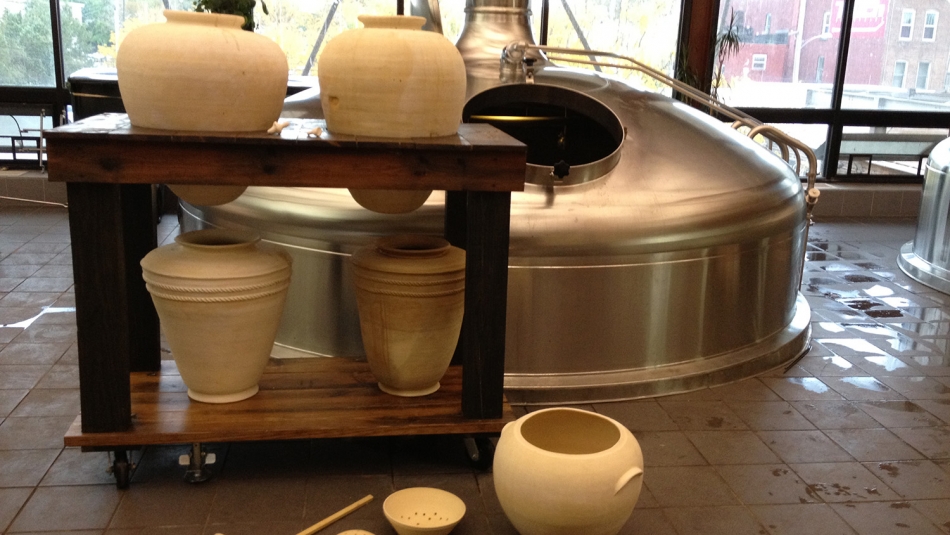
My research focuses on one particular piece in the larger puzzle, but I also teach a course on the global history of agriculture that asks students to think broadly about key themes and developments in the 10,000-year history of agriculture. Throughout this history, many societies have devoted significant energy, resources and attention to the production of alcoholic beverages. From very early on, humans demonstrated a particular fondness for these potent beverages. In fact, the jury is still out, but it’s even possible that agriculture first emerged to satisfy our taste for fermented beverages.
What takeaways do you hope people will have from your research?
I’m currently working on a book about Mesopotamian beer that’s aimed at a general audience. So this question is on my mind a lot. In one sense, I’m hoping to tap into the current fascination with all things alcohol and use this to pull people into the world of ancient Mesopotamia. Many people have a vague sense that this world once existed, but few have a real appreciation for how much we know about ancient Mesopotamia. Part of my aim, then, is to bring the specialist literature to a general audience. At the same time, this will be the first book-length treatment of Mesopotamian beer to appear in English. It fills a conspicuous gap in the specialist literature.
Mesopotamia was a land of beer drinkers, but beer has played only a minor role in archaeological and historical accounts. Everyone knows that it was there — in substantial quantities — but it is seldom assigned any particular weight in historical explanation. With some exceptions, one could say the same thing about our own land of beer drinkers. By plunging readers into a past both eerily familiar and radically different, I hope to encourage some broader reflection on the contemporary salience of this humble, ubiquitous and beloved beverage.
What are your research interests outside of beer?
My interest in agriculture and the politics of food also extends into the realm of animals. For example, I’ve recently written articles about pigs, sheep and goats in early Mesopotamia. As an archaeologist, I also usually spend a chunk of each summer engaged in fieldwork. I’ve taken part in field projects in the U.S., Scotland, Cyprus, Israel, Turkey, Egypt and Syria. My wife (Kathryn Grossman, NC State, Sociology and Anthropology) and I now co-direct an excavation project (the Makounta-Voules Archaeological Project) on the island of Cyprus in the eastern Mediterranean.
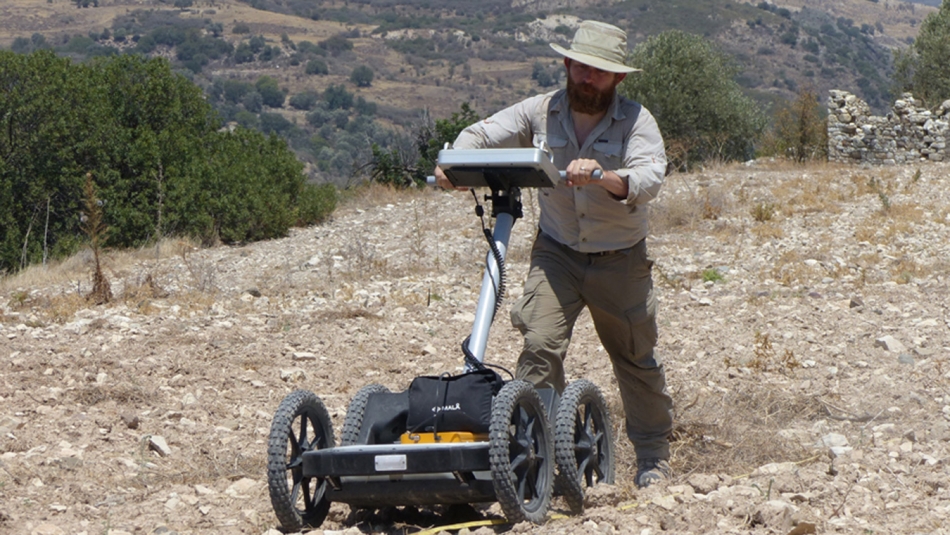
We are excavating the remains of a village composed of large circular houses and dating to approximately 2800–2400 BC. What is particularly interesting to me is the striking contrast between life in Cyprus during this period and nearby regions. Both Mesopotamia and Egypt were undergoing a radical, transformative phase of urbanization, state formation, and sharply rising inequality. Cyprus appears to have avoided following a similar path and, instead, remained a resolutely village-based, egalitarian society for the next 1500 years. My research project in Cyprus is also a field school where study abroad students receive hands-on training in archaeological methods. So far, we have provided 29 NC State students with this unique chance to “think and do” through archaeology.





